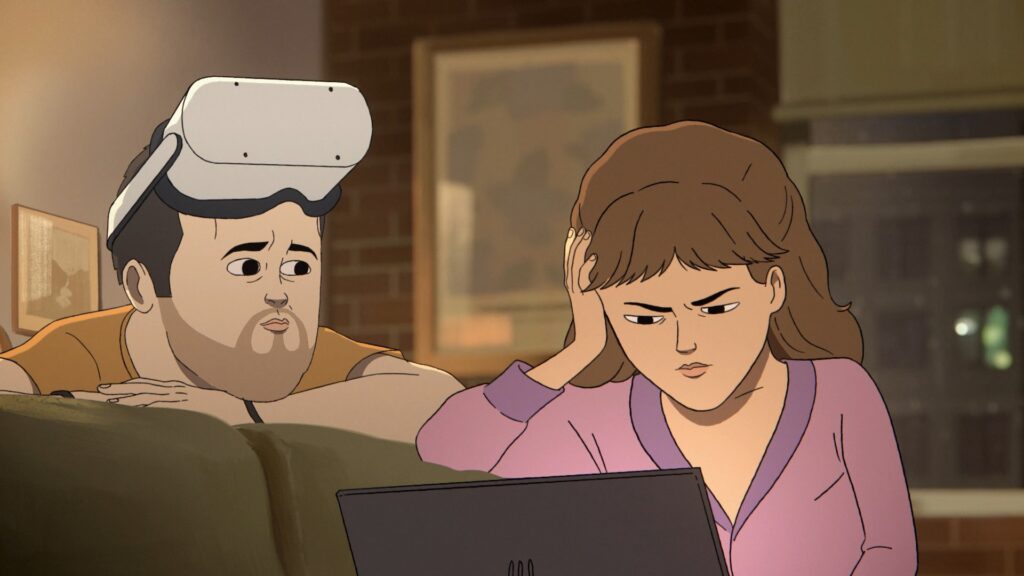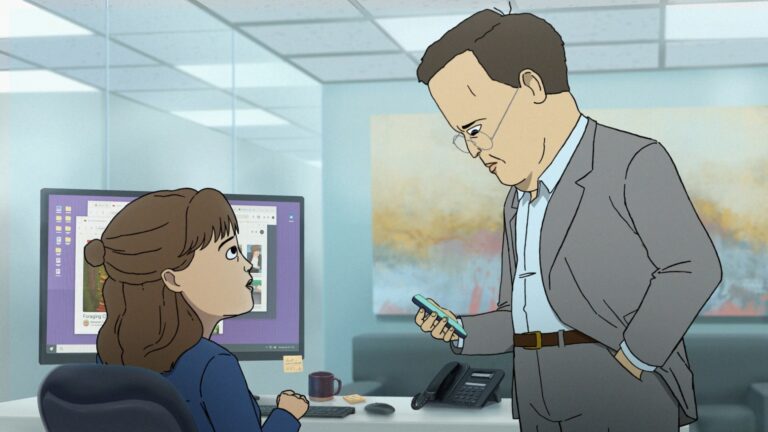How Sound Design Turns Migraines and Hallucinations into Sonic Art on Common Side Effects
Is that your headache pounding, or is it just the sound design of “Common Side Effects” working overtime again? If you’ve watched the show – and given that you’re here, I know you have – you already know that each migraine, hallucination, and trip-down-the-well-of-paranoia hits harder thanks to its absolutely bonkers sound design. But how does Adult Swim’s strangest new dramedy manage to make you clutch your temples and feel those spores crawling under your skin? Buckle in, friends. We’re about to pull apart the magic tricks and technical wizardry behind every sonic brainworm, migraine pulse, and certified spore-pop on “Common Side Effects.”
How Headaches Become a Vibe
Every show wants to stand out, but not every show sounds like this. Right out of the gate, the creative team led by Joseph Bennett and Steve Hely gave their audio folks a wild challenge: make migraines (and the many, many hallucinations) feel real. Not just narrative-real, but inside-your-head real. That meant heading into the studio and refusing to settle for off-the-shelf “drama sting number four.” They wanted something more – something weirder.
For migraine scenes, the audio squad pulled a move that would make any Foley artist grin: they busted out a stethoscope microphone to capture the wet, thumping sound of a real human heartbeat. Next, they pitched and layered it so the thump became a relentless, ear-filling pulse. Paired with loops of shallow breathing and the kind of tinnitus ring you might hear after a loud concert, it created a wall of discomfort. Every time Marshall or Frances clutches their skull, you’re right there, feeling that throbbing haze.

But the migraine trick doesn’t stop at the basics. The mix team threw in moments of distant, muffled dialogue, as if characters are underwater when those headaches crest. One audio engineer explained in a recent interview that sometimes, he’d blend in recordings of wind through apartment vents. Add a modulated whine at just the right pitch, and, surprise – you’re living inside a three-alarm headache.
Hallucinations: Going Beyond Swirly Colors
Sound doesn’t just sell migraines. “Common Side Effects” specializes in trippy, funny, and sometimes downright nightmarish hallucination sequences. Here, the audio team kicks it up a notch. Instead of opting for lazy echo tricks, they pile on the details until the hallucinations get under your skin.

Let’s consider Marshall’s first trip with the Blue Angel Mushroom. The scene opens in a quiet, bird-chirped park. Suddenly, the ambient sounds fade and bizarre sonic textures worm their way in. Listen closely: you’ll catch faint, backwards whispers – actual dialogue lines recorded by the cast, then played in reverse and filtered until they’re pure gibberish. But the real star of the show is the multi-layered, swirling tones that seem to spiral above the action. According to one behind-the-scenes chat, the sound designers used analog synthesizers patched through a weird chain of guitar pedals. They recorded the result onto old cassette tapes, then ran that tape through digital slowing and stretching.
That’s not all. Underneath the swirly madness lurks a low, sub-bass rattle. That throbbing, almost-too-low-to-notice tone was lifted from seismic recordings of minor earthquakes. Honestly, who does that? “We wanted viewers to feel off-balance,” admitted their lead sound designer in a Reddit AMA. Mission accomplished.
A Spore-Burst Symphony
What about the infamous blue spore bursts? Nobody forgets the sound of that fungal magic. The team here didn’t phone it in with canned “puff” effects. No, they wanted something that would say “mushroom” and “powerful transformation” all at once.
In the official Adult Swim behind-the-scenes featurette, a Foley artist gleefully demonstrates his secret weapon: fine sand, compressed air, a balloon, and a mini-cone of paper. Blow air through a sand-sprinkled file folder, record at high gain, slow it down, then top it with gentle glass chimes and some rapid-fire pops made by snapping celery sticks with a quick twist. The result? A spore burst that’s airy, shimmery, and a little menacing. And just before you get used to it, the sound mutates each episode – sometimes echoing, sometimes rippling with added digital sizzle, keeping you guessing.
For the extra-messy hallucinations, the team sometimes sprinkled in synth blips, animal breathing (seriously!), and strange, atonal voices processed into indecipherable “spore language.” Every burst tells its own sonic story.
Ambient Sound: Always in Motion
When you rewatch “Common Side Effects,” listen to the background. That’s where the real audio flex happens. The sound team loves layered ambience – each location, from Marshall’s cluttered apartment to a sinister pharmaceutical lab, gets its palette.
- His apartment hums with ticking clocks, a purring cat, and the distant thud of a neighbor’s footsteps, shifted in pitch to creep you out a little.
- Corporate boardrooms, on the other hand, are oddly airless and squeaky clean, with barely-there HVAC whooshes and an ominous, dental-office-flavored buzz.
- Then, whenever the show slides into fever-dream territory, the foley crew pile in real-world noises: firework crackle for anxiety, subway rumbles for dread, and, in one case, the sound of popcorn popping, stretched so much it becomes an alien pulse.
You get audio breadcrumbs everywhere you listen.
Audio Team Antics: Tales from the Mixing Desk
Now, for some delicious stories straight from the crew. Last month, during a Reddit fan Q&A, the sound editor revealed he once ran his voice through a guitar amp, while chewing on a popsicle stick, to record the gibbering voices inside Marshall’s splitting headache. Another audio wizard confessed they hid the soundscape from a carwash inside the background of a hallucination scene – because “it just felt right.”
Sometimes, things get downright competitive. In post-production, they award unofficial trophies for “weirdest source sound.” The winner so far? The crackling, shriveled time-lapse aging effect in Episode 6. It layered crumpling tissue paper, a stretched-out firework spark, and the “click” from winding up an old watch. Supposedly, one sound designer spent an hour snapping uncooked spaghetti to get that brittle old-bones crunch.
DEA Agents and Conspiratorial Clicks
Don’t think they forgot about the antagonists. For the DEA’s gadgets and surveillance rigs, the show mixes retro and modern. The clicks and beeps come from real 1980s dictaphones, with the occasional iPhone keyboard sneaking through for fun. Blend that with typewriter rolls and reel-to-reel tape fizz, and suddenly you start feeling that “someone is always listening.” Which, let’s be real, is exactly what the writers want you to feel.

Why It All Matters
On paper, “Common Side Effects” is just another animated crime dramedy. But the sound design tells us otherwise. Whether it’s the nerve-jangling migraines, mesmerizing spore pops, or those eerie layers of ambient noise, this show crafts an experience that’s equal parts comedy, paranoia, and late-night indie-psychedelia. Somehow, every episode finds a new way to mess with your ears – and your brain.
So next time Marshall goes mushroom-diving or Frances stares down a boardroom full of villains, plug in your headphones. You’ll catch a whole new world of detail, from the faintest background flutter to the grandest hallucination meltdown.
Stick Around — The Sonic Rollercoaster Isn’t Over
As “Common Side Effects” pushes toward a likely Season 2 (judging by all the buzz), expect the audio team to crank up the madness even further. Fan theories already swirl about next-level hallucination sequences and hints dropped through tiny SFX tweaks. Will the migraines get gnarlier? Will the spore-pops evolve new “dialects?” Whatever comes, you can bet that the sound designers behind this show are still somewhere, snapping spaghetti, pitching whispers, and figuring out just how weird a migraine can sound.
Miss a new sound trick? Rewind and listen closer. Or better yet, share what you hear with the rest of us. After all, isn’t sharing a good side effect?




